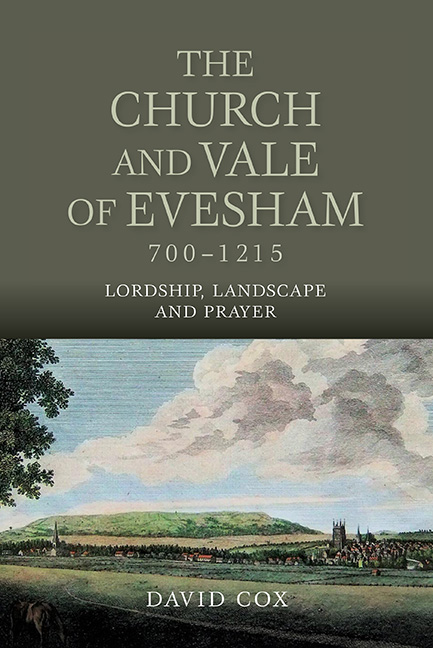Book contents
- Frontmatter
- Dedication
- Contents
- List of Illustrations
- Preface
- Timeline
- List of Abbreviations
- Part I From Minster to Abbey (701–1078)
- Part II Abbot Walter (1078–1104)
- Part III Twelfth-Century Themes (1104–1215)
- Afterword
- Appendix: The Abbots of Evesham to 1215
- Select Bibliography
- Index
- Miscellaneous Endmatter
- Frontmatter
- Dedication
- Contents
- List of Illustrations
- Preface
- Timeline
- List of Abbreviations
- Part I From Minster to Abbey (701–1078)
- Part II Abbot Walter (1078–1104)
- Part III Twelfth-Century Themes (1104–1215)
- Afterword
- Appendix: The Abbots of Evesham to 1215
- Select Bibliography
- Index
- Miscellaneous Endmatter
Summary
Investing in the countryside
AN increasing rural population in the twelfth century and a consequent competition for agricultural tenancies seemed on the surface to be working to the abbey's economic advantage. Since the monks did not have a better understanding based on comprehensive and continuous accounts, they may have seen no strong reason at the time to put money into the more efficient exploitation of their estates. It was later admitted that, in the twelfth century, the abbey's demesne lands were never provided with enough oxen to be ploughed to their full potential, and so were less productive of cereals than they might have been. In some places, of course, there had been good reasons for not ploughing. At Lenchwick the abbey had woodland that was valuable enough to require the services of a resident forester c.1190. His remuneration was a house and four acres of land and three sievefuls of seed corn a year; he was unable to grow enough corn to provide all his own seed but the abbey evidently preferred not to clear more land for him by sacrificing some woodland. In other places, however, the abbey was prepared to ignore potential arable land. At Offenham Abbot Adam chose to set aside a large level area between the village and the Avon and turn it into a deer park. The undertaking was ambitious in the amount of labour that was needed to dig a ditch round the whole circuit of the park and to make an outer bank surmounted by a hedge or a wooden pale. The capital cost, however, was not great; no sophisticated buildings were required and local materials and labour were plentiful. The value of the park was in its venison and other game, which furnished the table of the abbot and his guests, especially in winter, when other meats were scarce; in its coverts, which might eventually yield useful timber; and in its grazing areas, which could be rented out. Nevertheless, the park was essentially a luxury, more a sign of lordly status than an agricultural investment. The pleasure and prestige of owning it outweighed the economic considerations and were deemed sufficient to justify relinquishing an opportunity to grow more cereals there.
- Type
- Chapter
- Information
- The Church and Vale of Evesham, 700-1215Lordship, Landscape and Prayer, pp. 158 - 166Publisher: Boydell & BrewerPrint publication year: 2015



